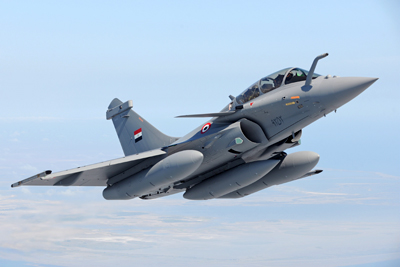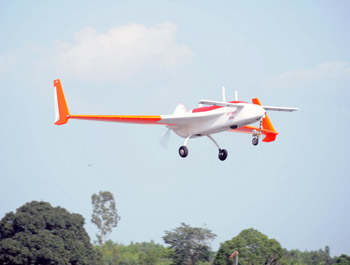INDIAN ARMED FORCES CHIEFS ON OUR RELENTLESS AND FOCUSED PUBLISHING EFFORTS

The insightful articles, inspiring narrations and analytical perspectives presented by the Editorial Team, establish an alluring connect with the reader. My compliments and best wishes to SP Guide Publications.

"Over the past 60 years, the growth of SP Guide Publications has mirrored the rising stature of Indian Navy. Its well-researched and informative magazines on Defence and Aerospace sector have served to shape an educated opinion of our military personnel, policy makers and the public alike. I wish SP's Publication team continued success, fair winds and following seas in all future endeavour!"

Since, its inception in 1964, SP Guide Publications has consistently demonstrated commitment to high-quality journalism in the aerospace and defence sectors, earning a well-deserved reputation as Asia's largest media house in this domain. I wish SP Guide Publications continued success in its pursuit of excellence.
Defence Allocation 2021
India spends one of the lowest on defence among the top six economies of the world as a percent of the GDP. At a time when the nation is faced with a war like situation with China in the northern borders, it was expected that the defence spending will get a boost.
 |
The Author is a third-generation Army officer. He was specially chosen to be the first General Officer Commanding (GOC) of the important Administrative Headquarters in Ladakh. Before superannuating on September 20, 2020, he was the Chief of Staff of a Corps in the desert sector. |

The Annual budget was presented in the Parliament on February 01. This year everyone was waiting eagerly to hear the Finance Minister, since this budget was in the backdrop of the COVID pandemic and resultant slowdown of the economy. The Defence sector too was looking at major increase in the allocation in view of standoff against China in Eastern Ladakh. Finally, the figures are in the open domain and the fine print is being read intently. The FM did not make any mention of the amount of the Defence allocation though this was part of the budget documents released online.

The defence budget, including outlay for payment of pensions, has increased to 4.78 lakh crore for 2021-22 as against last year's 4.71 lakh crore. This is just around 1.5 per cent increase over last year. If we excluding the pension outgo, the allocation in the annual budget for the armed forces stands at 3.62 lakh crore. The silver lining in the defence allocation is setting aside 1.35 lakh crore for capital procurement to purchase new weapons, aircraft, warships and other military hardware. In comparison the capital outlay in the defence budget 2020-21 was 1.13 lakh crore. The finance commission has also recommended this to be non-lapsable fund. This is an increase of about 19 per cent over last year. The RM tweeted that this is the highest in last 15 years. This looks like jugglery with the figures since the pension bill this year has been allocated much less amount. Is the government looking at increasing retirement age or bring some other scheme to reduce pension bill? No clarification on the subject is available at the moment and we will have to wait for details to emerge.

India spends one of the lowest on defence among the top six economies of the world. The share of Defence allocation as a percent of the GDP continues to be stagnant over the years. At a time when the nation is faced with a war like situation with China in the northern borders, it was expected that the defence spending will get a boost. As the situation started to deteriorate in Apr-May 2020 the forces were given additional 20,776 crores for emergency purchase.
All the three services have to plan for next decade ahead to modernise its inventory. With a budget of this magnitude lot of cash outflow will be in committed liabilities. Very little will be left with the services for new schemes. There is an urgent need to focus on our Intelligence, Surveillance and reconnaissance (ISR) requirements. This is an area which needs attention of the Army and IAF. Thus massive infusion of drones and UAVs should be on the cards.

The Army needs Light Tanks for deployment on our northern borders all along opposite China. The BMP has almost outlived its life and the FICV project has not been cleared in spite of following due process. In addition, the requirements of Artillery, Air Defence and other arms and service will have to factored. The IAF and Navy too needs infusion of new equipment and weapon systems to be able to fight and win wars of the future.
The reforms of the Ordnance Factories have not yielded any substantial savings. The OFB must fight competition with private industry or perish. The DRDO too has mostly fallen short of the expectations of the forces. The pension bill is too high and some method of offsetting this has to be thought by the government. The least that can be done is to remove the civiliansí employees from this head to see the actual bill of only the uniformed component of the forces.
Make in India and Atmanirbhar Bharat are laudable initiatives but without creation of an eco system for R&D in collaboration with private industry and academia it is nonstarter. The procurement process is still too cumbersome and bureaucratic in nature. In order to refine it keeps becoming more complicated.
The governments have been only paying lip service to national security. If we wish India to be able to not only take care of its immediate neighborhood but also project power in its area of influence, much more money has to be allocated for the defence needs.





